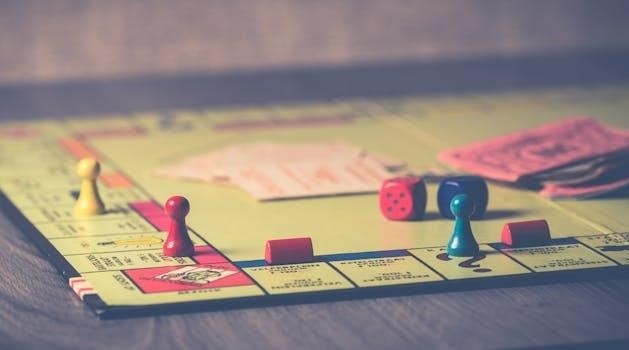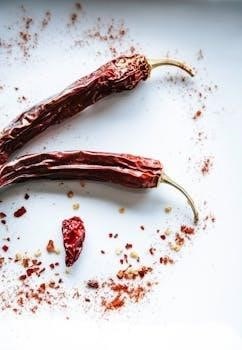Spicy Uno Rules⁚ A Comprehensive Guide
Spicy Uno elevates the classic game with exciting twists․ Forget standard gameplay and embrace a more engaging experience! This comprehensive guide unveils the core rules, providing a foundation for understanding the variations that spice up the game․ Get ready for fast-paced fun!
Spicy Uno is a thrilling variant of the classic card game, designed to inject a dose of unpredictable fun and excitement into your game nights․ While the fundamental objective remains the same – to be the first player to empty your hand of cards – Spicy Uno introduces a set of unique rules that transform the gameplay; These additions create unexpected scenarios, demanding quick thinking and strategic adaptability from players․
Unlike traditional Uno, Spicy Uno incorporates rule variations that can trigger spontaneous actions or alter the flow of the game dramatically․ These rules, often referred to as “house rules,” are what truly define the Spicy Uno experience․ They introduce elements of surprise, interaction, and even a bit of chaos, making each game a unique and memorable event․
The beauty of Spicy Uno lies in its adaptability․ While some variations are widely adopted, players are encouraged to customize the rules to suit their preferences and create their own personalized version of the game; This flexibility ensures that Spicy Uno remains fresh and engaging, providing endless hours of entertainment for players of all ages and skill levels․

Core Spicy Uno Rules
Spicy Uno builds upon the foundation of classic Uno․ Players aim to discard all cards by matching color or number․ Special cards add twists․ Understanding these core rules is essential before adding spicy variations․
Dealing and Initial Play
The game commences with a designated dealer distributing seven cards to each player․ Following the standard Uno protocol, the dealing process moves in a clockwise direction․ Once each player possesses their initial hand, the remaining cards form the draw pile, positioned face down at the center of the playing area․ The top card from the draw pile is then flipped over to initiate the discard pile, setting the stage for the first player’s move․
The player situated to the left of the dealer takes the first turn, adhering to the fundamental rule of matching either the color or the number of the card displayed on the discard pile․ If a player lacks a suitable card to play, they must draw a card from the draw pile․ The drawn card can be played immediately if it matches the discard pile’s criteria․ If not, it’s added to the player’s hand, and their turn concludes․ Play continues clockwise, with each player striving to strategically deplete their hand while navigating the exciting twists that Spicy Uno introduces․
Matching and Discarding
The core mechanic of Spicy Uno, like its traditional counterpart, revolves around matching cards․ Players must strategically discard cards from their hand by matching either the color, number, or symbol of the card currently atop the discard pile․ For instance, if the discard pile displays a blue 7, a player can discard any blue card or any card with the number 7, regardless of its color․
Wild cards provide flexibility, allowing players to change the color in play․ When a player discards a Wild card, they declare the new color, which the subsequent player must then match․ If a player cannot match the current card on the discard pile or chooses not to, they must draw a card from the draw pile․ If the drawn card is playable, they may play it immediately; otherwise, they add it to their hand and their turn ends․ The ultimate goal remains the same⁚ to be the first player to empty their hand of all cards, skillfully navigating the matching and discarding process․


Unique Spicy Uno Rule Variations
Spicy Uno distinguishes itself through rule variations that amplify the excitement․ These additions transform the gameplay, demanding quicker reflexes and sharper wit; Prepare for a wild ride as we delve into these unique twists that set Spicy Uno apart!
Slap on 6 Rule
The Slap on 6 Rule is a signature element of Spicy Uno, injecting a dose of lightning-fast action into the game․ Whenever a player discards a 6, all players must immediately slap the central discard pile․ This creates a frenzy of hands vying for contact․
The last player to slap the pile faces a penalty, typically drawing two cards․ This adds a layer of risk and reward․ A quick reaction could save you, while a moment’s hesitation could cost you dearly․
The Slap on 6 Rule encourages heightened awareness and reflexes, making it a thrilling addition․ It transforms the discarding of a 6 into a pivotal moment, where speed and agility are as crucial as strategic card play․ This rule often leads to laughter and friendly competition․

The timing of the slap is crucial․ A premature slap results in a penalty, as does being the last to react․ The rule adds an element of chaos and excitement․ It keeps players on their toes and ensures that every card play has the potential for a dramatic turn of events․ The rule adds an extra layer of complexity to the game․
Silent 7s Rule
The Silent 7s Rule introduces an element of suspense and comedic tension to Spicy Uno․ When a player discards a 7, everyone must immediately become silent․ This silence persists until another player discards another 7․ Any player who speaks during the silent period must draw a penalty card, often one card, though this can be adjusted by house rule․
This rule creates moments of hilarious awkwardness as players struggle to communicate without words․ Normal gameplay, including drawing cards and discarding, continues in complete silence․ The tension builds as players try to anticipate each other’s moves without verbal cues․
The Silent 7s Rule tests players’ non-verbal communication skills and their ability to maintain composure under pressure․ A simple cough or involuntary exclamation can result in a penalty․ The silence is often broken by stifled laughter, which, of course, also incurs a penalty․ The rule adds a unique and memorable element to the game․ It encourages players to be mindful of their actions and to embrace the absurdity of the situation․ The silence is often more challenging than it seems․
Trading Hands with 0
The “Trading Hands with 0” rule is a game-changer in Spicy Uno, adding a strategic element of chaos․ When a player plays a 0 card, they get to choose another player to swap hands with entirely․ This isn’t optional; the trade must occur․
This rule can dramatically shift the game’s dynamics․ A player with a nearly empty hand might suddenly inherit a full hand of cards, while someone struggling with unwanted cards could receive a winning combination․ The choice of whom to trade with is crucial․ Players often target the person closest to winning or someone they perceive as having a favorable hand․
However, the trade can also backfire․ A player might unintentionally give a weaker hand to an opponent or receive a worse hand themselves․ This element of risk and reward makes the “Trading Hands with 0” rule both exciting and unpredictable․ It forces players to think strategically about their choices and to anticipate the potential consequences of their actions․ The 0 card becomes a powerful tool․
Playing Out of Turn (Jump In)
The “Playing Out of Turn“, often referred to as “Jump In”, is a fast-paced rule in Spicy Uno that allows players to interrupt the normal sequence of play․ If a player holds a card that is exactly identical to the card currently on top of the discard pile, they can immediately play that card, even when it is not their turn․
This means the color and number must be the same; a similar card is not enough․ This rule demands quick reflexes and attention, as players must constantly monitor the discard pile․ Successful jumps can disrupt opponents’ strategies and allow you to get rid of cards faster․
After a player jumps in, the turn order resumes from them, effectively skipping the player who would have gone next․ This can create surprising shifts in momentum and force players to adjust their plans on the fly․ It also adds a layer of excitement and anticipation to the game, as anyone could jump in at any moment․ This rule can also be used defensively․
Stacking Draw Two and Draw Four Cards
The “Stacking Draw Two and Draw Four Cards” rule is a particularly vicious addition to Spicy Uno․ When a player lays down a Draw Two or Wild Draw Four card, the next player has a choice⁚ either draw the designated number of cards or play another Draw Two or Wild Draw Four card on top․
This creates a stacking effect, increasing the penalty for the next player in line․ If a player chooses to stack, they pass the cumulative draw penalty to the subsequent player․ This continues until a player cannot or chooses not to stack, at which point they must draw the total number of cards accumulated from all the stacked cards․
For example, if Player A plays a Draw Two, and Player B plays another Draw Two, Player C must draw four cards․ This rule can lead to dramatic swings in fortune, as players can suddenly find themselves burdened with a huge hand․ It adds a layer of strategic depth․
